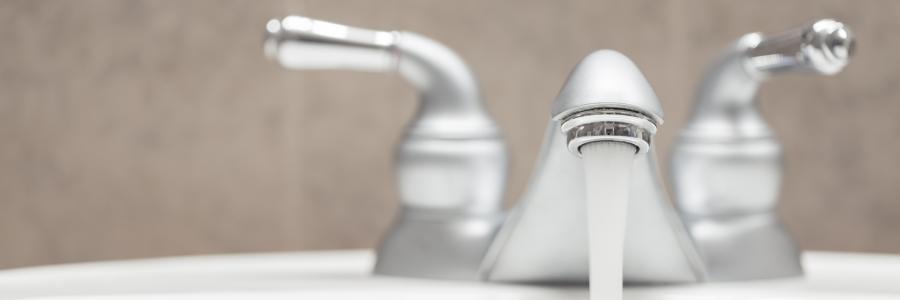
Water is essential to the health and well-being of all of us. When your drinking water leaves our treatment plant, our team has done many things to make sure the water is clear, safe, and ready for the many uses you have for it at home.
In many cases, changes we might observe to the drinking water are temporary and harmless, and letting your faucet run is helpful as a first action to solve a myriad of issues such as cloudiness, discoloration or smells.
If you are ever concerned that your water might be unsafe and want us to take a look, we are happy to come take samples and verify that the water in your home is safe. Simply call us at (412) 255-2423 (Press 1) or report an issue at any time.
Below you will find answers to commonly asked questions about your drinking water:
Your Questions Answered!
How Does PWSA Make Sure the Water is Safe?

Your water is tested every step of its journey by dedicated professionals responsible for operating, maintaining, and monitoring our water system.
Each day, we test for approximately 100 different chemical and microbial constituents before, during, and after the treatment process.
Additionally, we perform an average of 3,000 routine tests per month at the Water Treatment Plant and Microfiltration Filtration Plant. Lastly, we perform approximately 1,500 routine tests per month at various points of the distribution system.
Your drinking water meets or exceeds all standards for safety.
Where Does My Drinking Water Come From?
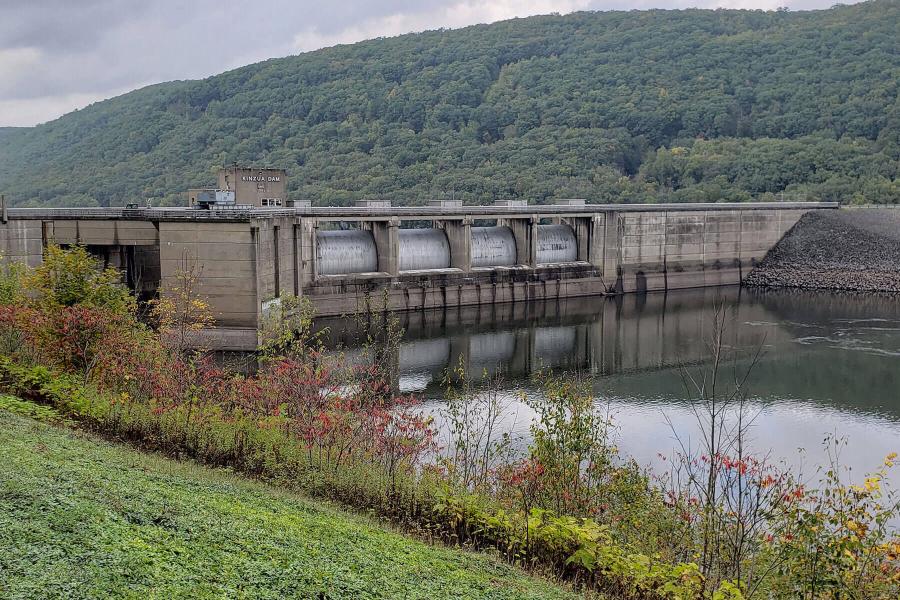
Our Source Water
The Allegheny River is the source for PWSA's drinking water. The headwaters of the Allegheny is located 352 miles northeast of Pittsburgh.
Named River of the Year in 2024, The Allegheny is a great source. The Upper Allegheny winds through national forest, pastoral farmland, small towns, and valleys. The scenic nature, remarkable fish and wildlife varieties, and recreational opportunities preserve this upper portion under the 1968 Wild and Scenic Rivers Act. Recognition under this act is a distinction earned by only a tiny percentage of American Rivers.
PWSA's Commitment to Our Source
At PWSA, we are doing our part to conserve and improve the condition of our waterways which means taking steps to manage stormwater and reduce pollution entering our streams and rivers. PWSA’s green infrastructure projects slow the flow of stormwater over land and actions such as separating stormwater flows from pipes that carry sewage significantly improve water quality.
We continually monitor the conditions of the Allegheny and collaborate with our community and regulatory partners to protect the integrity of this vital resource.
Is There Lead in my Water?

Since the establishment of our industry-leading Community Lead Response program in 2016, we've replaced nearly 11,00 public lead service lines and 7,500 private lead service lines.
We remain dedicated to removing all lead service lines from our system through targeted programs by 2026.
In 2019, we began adding orthophosphate to our treatment process. Orthophosphate is a food-grade additive that forms a protective barrier between lead pipes and the water flowing through them. It is approved by the EPA and successfully used in water systems across the world. Orthophosphate was selected by PWSA and approved by the DEP after an extensive year-long study of treatment alternatives.
We are currently reporting the lowest lead levels in our drinking water observed in decades which are well below the state and federal action level of 15 parts per billion (ppb).
We continue to monitor and refine our drinking water treatment process to further reduce lead levels. Learn more about our lead program at lead.pgh2o.com.
Our Priority Lead Service Line Replacement project will replace lead service lines at daycares and locations with elevated lead samples taken via our sampling program. To request a free lead test kit for your home visit www.pgh2o.com/leadform or contact LeadHelp@pgh2o.com.
What Makes Water Cloudy or Discolored?
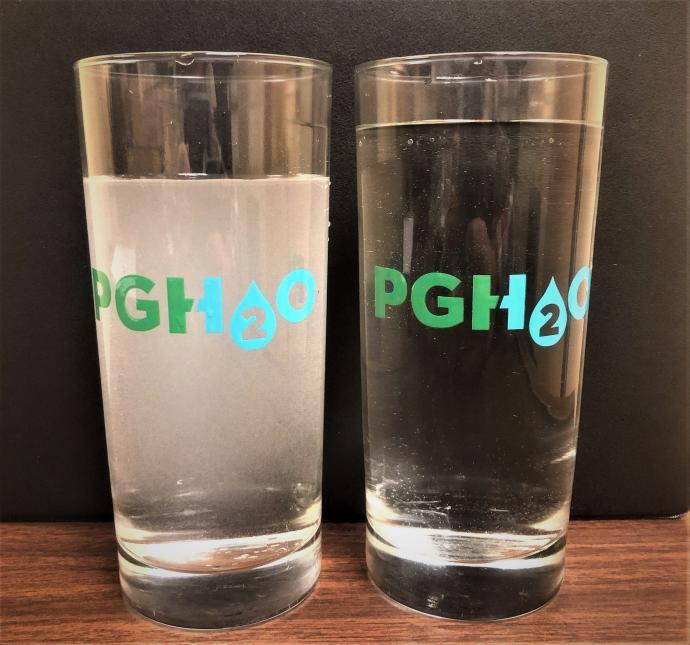
If you water appears cloudy, milky or discolored, it may be the result of the following conditions:
The Cold
If you experience cloudiness, the cause could be harmless, such as cold weather causing tiny air bubbles to be trapped in the water as it moves through the cold pipes outside to get to your house. Colder water can hold more air than warmer water and what you’re seeing is an excess of harmless, trapped air.
Water Pressure at the Faucet
The water that comes out of your faucets is under pressure, meaning it can also hold onto excess air and appear cloudy when you first fill up a glass.
Your Faucet Aerator
The aerator at the end of your water faucet may need to be cleaned or replaced. Unmaintained aerators can become clogged with sediment and bacteria, and this can affect the look and smell of the water.
Being Away and Not Using your Water Frequently
Sediments in pipes can be stirred up if you haven’t used water in a while. If you have been away or use water infrequently, it is best to run the water until the tap is clear to get the sediment out.
Maintenance of Your Hot Water Tank
Performing preventative maintenance on your water heater usually improves the unit’s longevity and performance, saves you money, and keeps your water clean.
Over time, sediment can build up inside of the tank, can reduce your water heater's energy efficiency, and clog your water lines. Build-up can even promote the growth of bacteria. It is good practice to flush and clean your tank annually.
What Makes Water Smell?
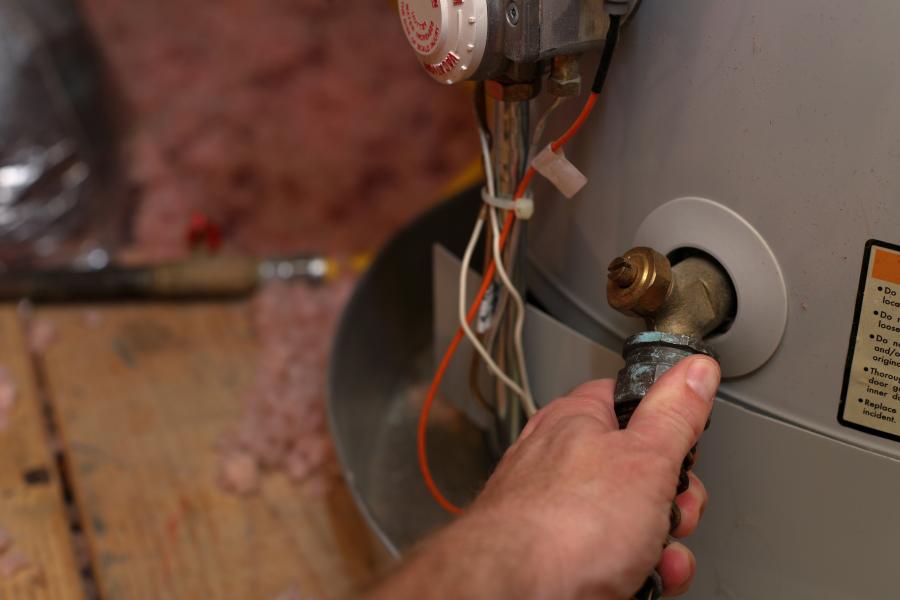
The distinct odor of rotten eggs is often the byproduct of certain bacteria in your hot water tank that produce stinky sulfur gases. Your hot water tank is like an incubator. If the conditions are just right – say, you haven’t used hot water in a while or were on vacation – bacteria can grow.
Try running only cold water on the faucet in question. If the odor subsides, check your hot water tank.
It is good practice to flush and clean your tank annually to prevent build-up and bacterial growth.
If you detect and earthy, musty smell to your water, this is often the result of harmless geosmin and methylisoborneol (MIB) compounds. Learn more about these compounds: Water taste and Odor.
What is the Cause of Sewer Odors Inside?
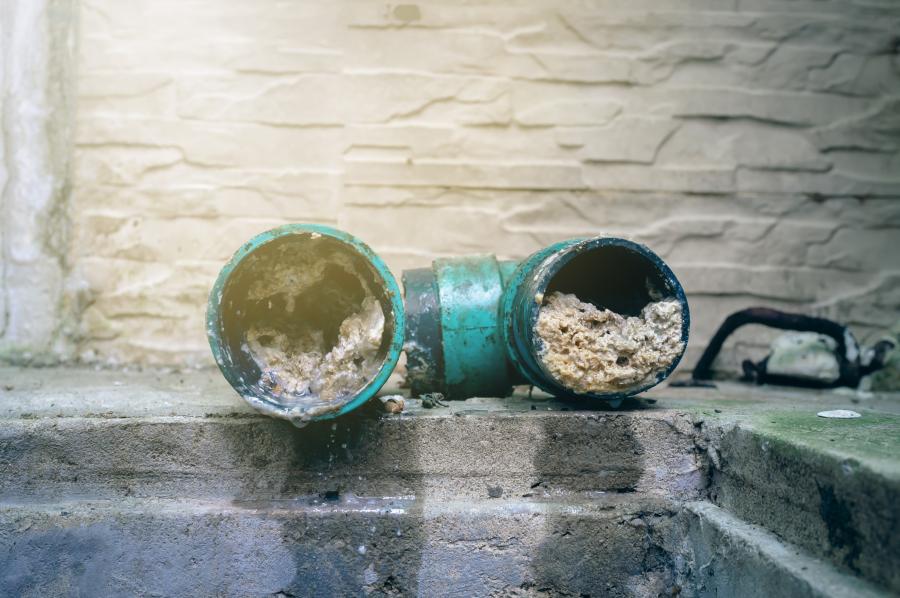
This odor is usually because there’s a clogged or slow drain somewhere in your home plumbing. That drain will pick up debris, which can expel nasty odors and gases into your home when you turn the water faucet on.
Test out all your faucets and see if the odor is limited to specific ones. That will give you a better idea of the location of the clogged or slow drain.
Cracked or damaged sewer lines can also cause problems. Owners of older homes should have their main sewer line inspected at least once every 10 years.
What Causes Brown Water?

Your water can look brown coming out of the tap if construction work is going on nearby. Routine maintenance, periodic pipe flushing, or active work like line replacements and repairs can alter water pressure. Pipes can also be disturbed causing sediment inside the pipes to be stirred up during active construction.
If a fixture in your home is made of steel or iron, it can rust over time. Rust sediment builds up and eventually can contribute to rusty or brown water.
Don't drink the water while it's brown. As a first action, try running your tap to clear the brown water for a few minutes.
If active construction is going on, you’ll be notified when it’s safe to drink the water again. Once you're notified, the water is safe to drink.

Tips for Maintaining Your Water Systems at Home
The water that arrives at your home has a clean bill of health. Did you know that you can take actions at home to maintain your faucets, hot water tank, refrigerator filters and showerheads can keep your water quality high and your family safe?
Follow these important tips and check out these resources for simple maintenance you can do on your home system:
Maintenance of Your Faucet Aerators
The aerator at the end of your water faucet – the small cylinder-shaped piece at the end – adds air into the water coming from your tap to reduce splashing and limit the flow of excess water. Aerators catch some of the silt, minerals, and other debris that can flow through your tap water, which can over time cause build-up and impact your home’s water quality.
It’s recommended that you replace your aerator every year and clean it twice per year. For step-by-step, visual instructions on cleaning or replacing your aerator, check out the U.S. Department of Energy’s Installation Guide.
Maintenance of Your Hot Water Tank
It is important to make sure that your hot water tank is set to the correct heat and is cleaned regularly to prevent sediment build-up and bacterial growth. The temperature should be set to 120 degrees. Flushing the tank and checking the anode rod, should be done annually. There are many great video guides and resources to do this yourself. A professional can always perform this service as well.
Maintenance of Your Refrigerator Filter
If you have an in-refrigerator water dispenser, proper maintenance of the filter is essential to ensuring your water is clean. The water filter in your fridge should be replaced every 6 months. While every fridge is different, changing the water filter is often very easy. With many filters, you can locate the filter by looking inside the fridge compartment for a plastic filter cover. It may be in the door, a drawer, or on an interior side, ceiling, or back fridge wall. Look up your filter and refrigerator brand to locate a replacement and simple instructions for replacing the filter.
After replacing your filter, let the water dispenser run for up to five minutes to remove the air and flush the system.
Keep Wet Rooms Clean and Stop Leaks Immediately
Any room where water is used - bathrooms, kitchens, basements - should be cleaned regularly. When wet rooms are not cleaned, bacteria, fungus and mold can grow and affect the health of you and your family.
If a fixture or pipe is leaking, fix it immediately. Not only can leaks cause damage over time, but when parts of our homes get wet that aren't meant to like walls, framing lumber, floors, and carpets, bacteria, mold and fungus can grow.
